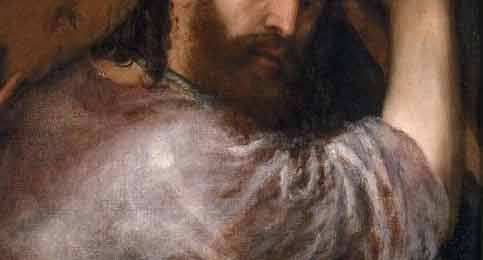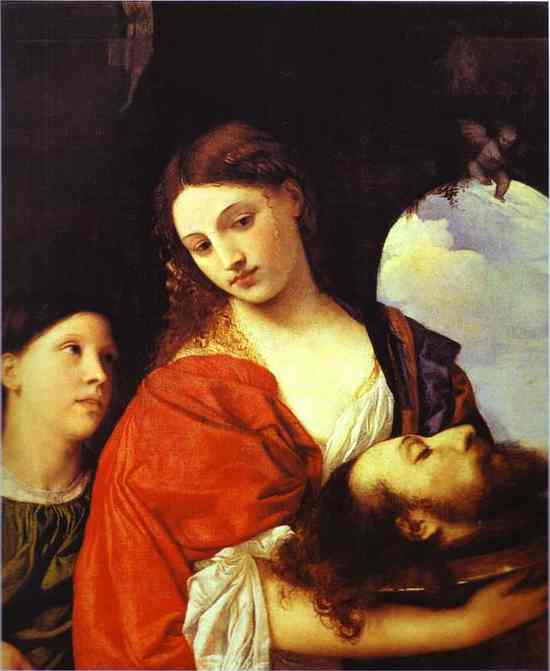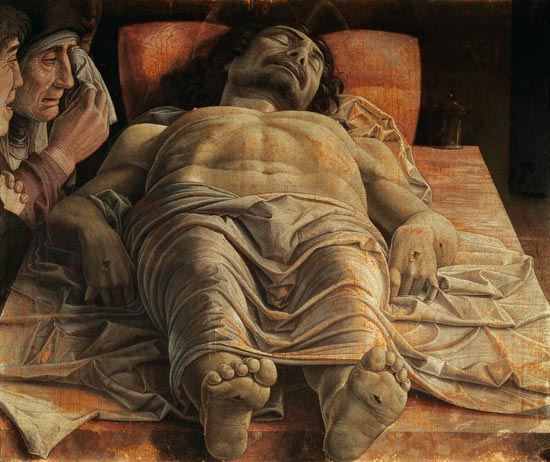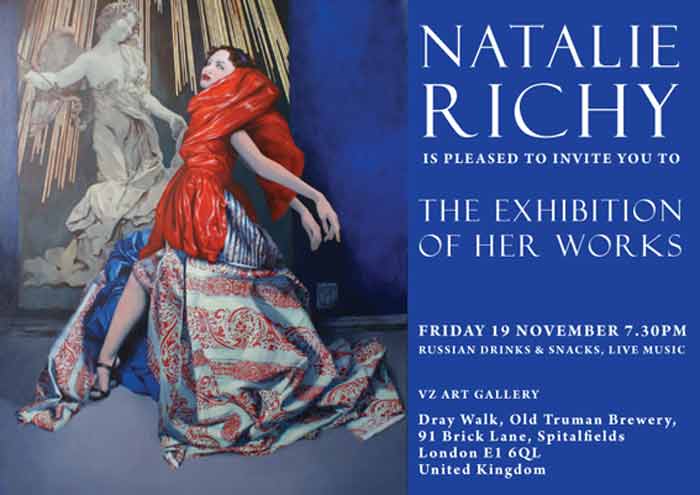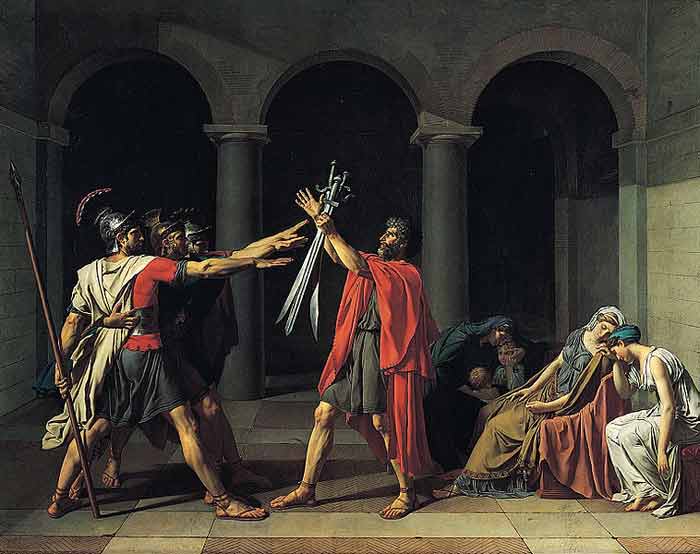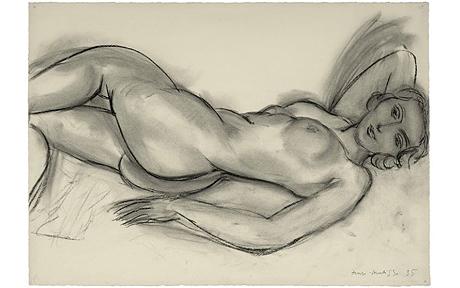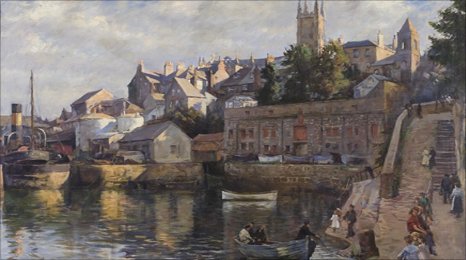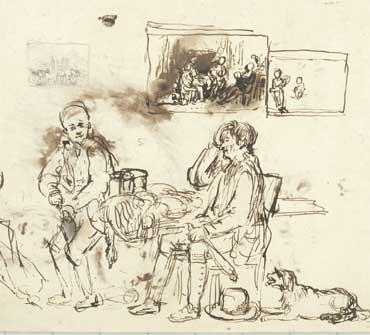On 1 Jul, 2014 With
“Glazing” in relation to the Venetian Method refers to the application of a darker transparent paint over a lighter area. Doing so causes light rays to pass through a transparent darker layer, bouncing off the lighter surface underneath, then returning to the viewer’s eyes, and was useful in creating subtle optical illusions. Only the Renaissance practice of glazing can produce this particular effect, one which results in the look of a warm glow and more saturated colours than the same pigment could achieve if applied more thickly and opaquely. Modern methods, with their more opaque results, lose a sense of distance when one is looking at shadows. Rembrandt’s glowing and rich dark browns owe their origins to this Venetian…
Read More
On 27 Jan, 2011 With
Classical painting techniques – Sfumato Sfumato is one of the four canonical painting modes of the Renaissance (the other three being Cangiante, Chiaroscuro, and Unione). It corresponds to the concept of ‘low-contrast’ in photography. The Italian word sfumato (pp. of sfumare, ‘to vanish’ or ‘to shade’) captures the idea precisely. The finished product appears as though a veil of smoke had drifted between the subject of the painting and the viewer, adding some brightness to the pure darks and blocking some of the pure brights of the subject. It is not a difficult technique in practice. It requires competence in brushwork and judgement of value (brightness) but does not necessarily require a high degree of skill. It consists in painting…
Read More
On 23 Jan, 2011 With
Classical painting techniques in Renaissance – Foreshortening Part 4 Foreshortening refers to the visual effect or optical illusion that an object or distance appears shorter than it actually is because it is angled toward the viewer. Although foreshortening is an important element in art where visual perspective is being depicted, foreshortening occurs in other types of two-dimensional representations of three-dimensional scenes. Some other types where foreshortening can occur include oblique parallel projection drawings. Figure F1 shows two different projections of a stack of two cubes, illustrating oblique parallel projection foreshortening (“A”) and perspective foreshortening (“B”). This technique was often used in Renaissance painting.
Read More
On 12 Nov, 2010 With
Natalie Richy’s Fine Art Exhibition
Read More
On 28 Oct, 2010 With
Read More
On 24 Oct, 2010 With
London salerooms produced a record series of Impressionist and Modern art auctions last week, but only just By Colin Gleadell After the buzz of expectation created by the London salerooms, they did produce a record series of Impressionist and Modern art auctions last week, but only just. Mid-way through the fifth and final session, the sales total crept past the previous record of £298 million, set in June 2008, finally ending up at £303 million. There were no celebrations, however, and a palpable air of disappointment pervaded. Strip away the auctioneers’ commissions, and the total was nearer £250 million, below the £300 to £450 million estimate for the series. Things began badly at Bonhams, which sold none of its top…
Read More
On 17 Oct, 2010 With
A three month public campaign has seen the painting ‘Inner Harbour – Abbey Slip’ by Stanhope Forbes saved. Grants of £130,000 together with generous donations from many private individuals has meant the iconic view of Penzance is secure. Painted in 1921 the painting is loved throughout the country through its use on greetings cards and prints. It will now continue to be displayed less than half a mile from where it was painted. The success of the fundraising campaign means this important part of Cornish heritage is available for everyone to enjoy at Penlee House Gallery & Museum. For thirty years the National Heritage Memorial Fund has been saving the nation’s most important treasures and now this piece of quintessentially…
Read More
On 14 Sep, 2010 With
Famous Artist dies after regularly spraying varnish on his paintings in a room without ventilation (Here You can find out how to become Successfil in Fine Art World) By DAILY MAIL REPORTER An award-winning artist died after a fall blamed on the effects of a varnish he sprayed on his paintings. Govinder Nazran, 44, had used the product – Brasslac – in a confined upstairs room with the wrong protective equipment, an inquest heard. His widow blamed the product for her husband suffering epileptic-type fits and a coroner ruled his misuse of the product contributed to the tragic fall that killed him. Father-of-one Mr Nazran, of Saltaire, West Yorkshire, died from head injuries suffered when he collapsed at his home on…
Read More
On 30 Jun, 2010 With
To be resolved: continuing Bridgewater loan and sale of second painting By Martin Bailey The Art Newspaper Fundraising for Titian’s Diana and Actaeon has been successful, but concluding the £50m deal with the Duke of Sutherland has become bogged down over legal and financial questions. The original deadline for the National Gallery of Scotland (NGS) and the National Gallery (NG) in London to sign a firm commitment to buy was 31 December. Both the Duke and the galleries are becoming increasingly frustrated by the delay. The Art Newspaper can reveal that there have been two difficult issues to resolve. The first concerns assurances over the continued loan of the remaining 26 Bridgewater paintings that have hung at the NGS since…
Read More
On 30 Jun, 2010 With
New discoveries in America’s oldest public collection of drawings Works by John Singer Sargent and David Wilkie are among the finds By Jason Edward Kaufman NEW YORK. The first scholarly survey of the drawings collection of the New York Historical Society has brought to light previously unknown or misattributed works by John Singer Sargent, Louis Comfort Tiffany, David Wilkie and others. The 8,500 works, most of which are by American artists, constitute the earliest assembled public drawing collection in the United States, begun in 1816, but they had never been systematically studied until curator Roberta Olson began the task five years ago. Nearly 200 highlights of her study, which was funded in part with a $175,000 grant from the Getty…
Read More


